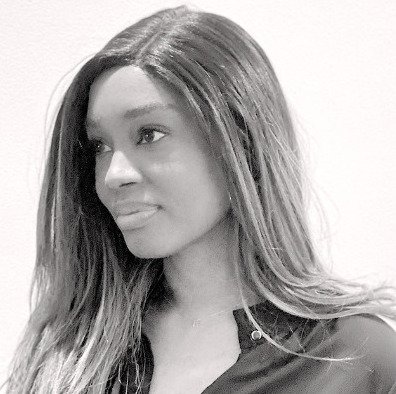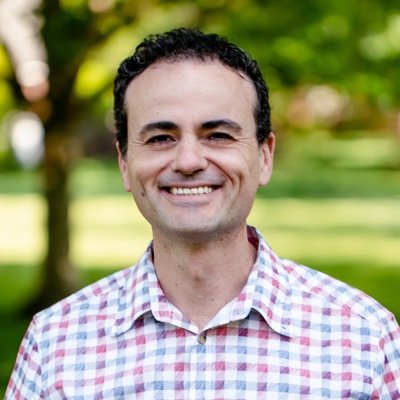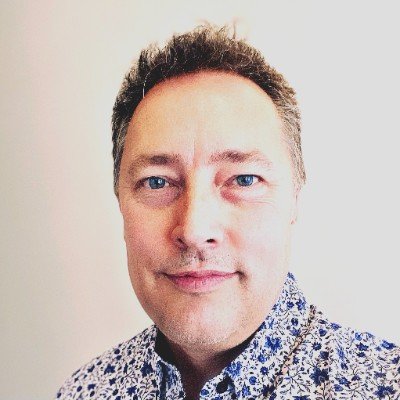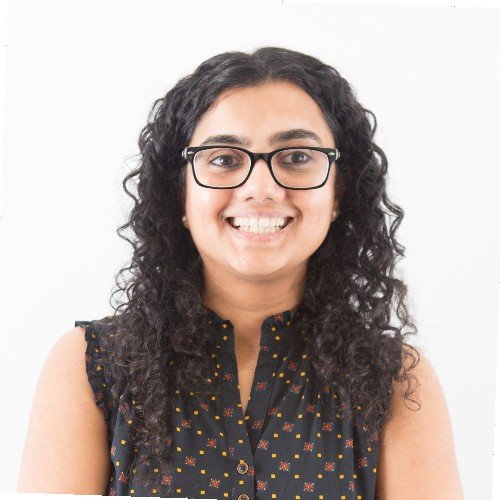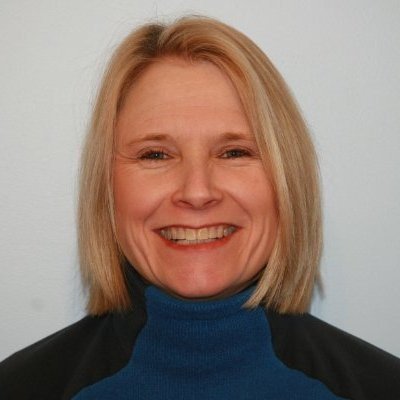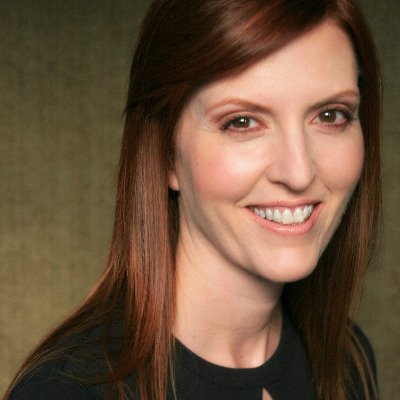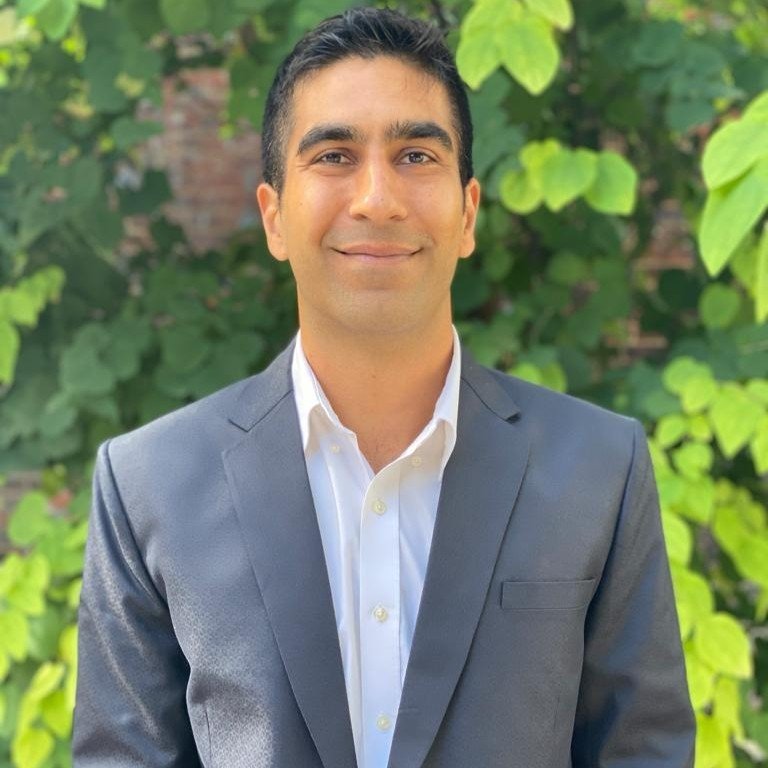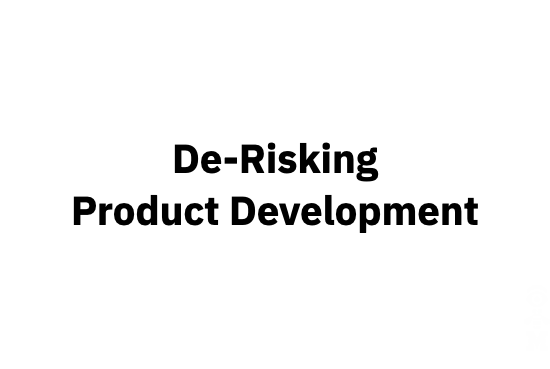I’ve never celebrated any of the work anniversaries during my career at IBM, until this one.
I reasoned that I work in the tech industry where moving from company to company is celebrated and staying at a company isn’t. In fact, people proudly put x-Company A, x-Company B after their name on LinkedIn, it would appear as a badge of honor. I also work in design and research in the tech field which is largely a younger person’s game. You don’t see a lot of people with grey hair in my business. Those who know me well know that I’m a champion of diversity and working against discrimination of all sorts. However, I’m also acutely aware of the fact that ageism still appears to be the last ism to be addressed and is sadly still practiced seemingly unabated in parts of society.
So what changed my mind about celebrating a career anniversary this time? Well, two things. First, I recently read former IBM CEO Ginni Rometty’s book Good Power in which she tells her life story openly and shares her recommendations for leaders. I found her book incredibly inspiring and I so appreciated how open she was about her life as well as her long and successful career.
I also recently delivered a keynote at the BLEND conference during which I shared my life story and my recommendations for a rewarding career and life. Ginni’s book and the feedback from the audience at the BLEND conference both reinforced the interest in and the value of sharing information like this. And that is what inspired this blog post. So here goes!
This week I'm celebrating 35 years with IBM! I can hardly believe that myself. And to think that I was only planning to stay a year, more on that later. And I’m not done. I plan to continue my IBM career for many years to come.
I wrote a blog post a few weeks ago on the topic of Career Paths are Circuitous. I talked about that many of the students I've taught and mentored over the years have had the mistaken notion that people choose a profession and move directly into it. That hadn't been my experience. In fact, I recently posted a poll on LinkedIn asking whether people had had a career pivot and fully 78 percent of them said they had. That blog post inspired Markus Grupp to invite me to present the closing keynote on this theme at the recent BLEND Conference a couple of weeks ago. Sharing my life story and life lesson inspired recommendations struck a chord with the audience and led to a long lineup after my talk of people with lots of questions and requests for advice. And many follow ups in LinkedIn DMs.
Everything you do in life contributes to who you become as a person.
Let me walk you through the phases of my life and what I learned from each one.
Lessons from my early life
I am a first generation immigrant who didn’t know a word of English when my family moved from The Netherlands to Canada. As an eight year old immigrant boy, I knew that nobody could understand me and I couldn’t understand them so I said nothing. That led to me being diagnosed as having a learning disability and I was sent off to a special school. That was rough because I was bullied while waiting to take the bus each morning to what the other kids referred insensitively to as the “retard school”. I’m thankful to my older brother who helped me through that period by defending me.
And I’m thankful to a teacher at that school, an elderly bowtie wearing British gentleman, for noticing that I didn’t have a learning disability but rather simply didn’t know the English language. They didn’t have English as a second language classes back then. He taught me English and I was soon returned to my regular school where I did very well. Even when I was back in the regular school system where my brother and I spoke perfect English, my parents were still aware of the prejudice against immigrants at the time so they didn’t go to parent-teacher interviews for fear of revealing their less than perfect English, spoken with a strong accent. Those early experiences taught me to never assume that you know what someone else is going through and how damaging bullying can me. I also learned to have empathy for people who are learning to speak another language and may not yet speak it perfectly.
I had part-time jobs while at high school that had an impact on me too. Many of them involved physical labor, like bailing hay on a farm. While they inspired me to pursue additional education so that I wouldn’t have to do that kind of work for the rest of my life, they also engendered in me a healthy respect for physical labor and the contribution it makes to society. Similarly, I did most jobs in a hospital other than surgeon and nurse. I particularly enjoyed being a janitor because I could clean the floors in the operating rooms and other restricted parts of the hospital after hours and be all by myself. I prided myself in being able to polish floors to a beautiful shine that you could see yourself in. I would also practice my singing at full volume. I learned though that when I emptied the trash in offices or cleaned the front glass doors of the hospital when other people were around, that a janitor is essentially invisible with nobody taking notice of someone in that role, nor the job they’re doing. That experience taught me to go out of my way to acknowledge and thank the janitor that empties the trash in my office and to praise the work of another janitor who cleans the hallway floors each evening as I leave for home. I do the same for others in similar roles like grocery store staff, airport staff, and support staff.
A career in music
While I played hockey, volleyball, and squash, music was my true love during all of high school. I took classical lessons at the Conservatory of Music in theory, various instruments, but mainly voice. I acted and sang in high school musicals, jazz bands, and choirs. I also played professionally in a band every Saturday night at a club and recorded an album. It had always been my plan to continue in music as a career and to pursue a Bachelor in Music degree.
However, when I checked out University of Toronto’s Faculty of Music before applying, I saw students spending full days in tiny practice booths during the parts of the day when they weren’t in classes. I also consulted my high school music teacher who had been much of my inspiration and encouragement. He said that even though I wanted to go into musical performance, most people who take a music degree end up teaching music and then they spend the rest of their lives listening to bad music. I guess he was speaking from personal experience. He encouraged me to make music my avocation and to pursue another subject as my major, which I did.
Becoming a clinical psychologist
I decided to enter the University of Toronto majoring in psychology and cognitive science. Subsequently, in graduate school, I specialized in clinical psychology focussing on both practice and research. I also taught research methods, ran the fourth year undergraduate thesis program, and pursued a minor in statistics and market research in the business school. I did clinical internships at a correctional institute and research assistantships at a psychiatric hospital. My specialization was clinical depression and I carried out and published many studies into various aspects of the disorder.
Pivoting to design and research
I was responsible for running a lab during my PhD program that required me to recruit and hire research assistants. I posted a job opening and was shocked to discover that only men applied for it. The university was about 60% women so I found it strange that no women applied for the job. When I explored further I discovered that women didn’t apply because the job involved working with computers. The experiments were programmed by me into the computer and the job actually involved simply turning on the program and advancing it to particular experimental tasks.
Being a good social scientist, I determined that this observation needed further investigation. I created a Computer Anxiety Scale which validated that observation that women more so than men back then had anxiety about and were fearful of computers. I did a content analysis of computer advertising which not surprisingly showed a significant male bias. I also looked at the design of computer user interfaces for clues and determined that users were given very little if any positive experiences while working with a computer and in fact would experience significant negative feedback when they did anything wrong that caused an error.
I then immersed myself into the field of design and explored ways of enhancing the design of user interfaces focusing on a positive experience and positive feedback. I then carried out a study with women who were anxious about computers and those who weren’t (using my Computer Anxiety Scale) and had them experience the usual design of user interfaces compared with my new design. I analyzed self-report and also heart rate and galvanic skin response as psychophysiological measures of anxiety. The results surprised even me. The new design completely eliminated the anxiety that the women felt. I presented this series of studies at a scientific conference and my findings were picked up by the press resulting in radio and TV interviews.
This is Paul from IBM calling
Paul Smith, a UX designer at IBM had seen the press reports about my design and research work. He gave me a call saying that he was impressed with my work and asked, “have you ever considered working for IBM?”. I answered truthfully, “no, but I’m willing to consider it.” I was intending to be a clinician, a researcher, and a prof. However, I had actually read a book about the founders of IBM the previous year and I was fascinated by the culture of the company. I agreed to go for an interview and was immediately impressed by what I saw and heard. They were also impressed that I had also programmed an intuitive user interface for students and researchers in what we now call data science to know which statistics software package to use and which statistical analysis method to use given the structure and characteristics of their data.
When we started talking salary, I said that I would give it a go for a year. I also met with the lab director and with the VP of M&D. They told me that IBM was planning to break up into smaller units and that the IBM Toronto Lab would become it’s own independent software company. They wanted me to take on the role of elevating the design and research practice so that the lab’s products would be able to compete on a world stage in new markets. The company didn’t end up being broken up but the potential of that happening was the inspiration for them hiring me. And, that was 35 years ago.
My years at IBM
I was an individual contributor for about a year or two. I remember during those early years that I was asked to do a statistical analysis on a survey they had conducted. It had about 150 responses so I asked how the sampling was done and was told that all current customers of that large and specialized product had responded. So, it wasn’t a sample; it was the population. I pointed out that they didn’t need to do any statistical analyses on the data because any differences observed were in fact real. I realized that research rigor wasn’t very high at the company.
My first manager, Dave Pinkham, was an old-school IBM manager and he had quite the impact on me. For example, he was a stickler for punctuality and to this day, I am too. I start my meetings right on time, to the second. A colleague some years later who had a similar passion for punctuality used to calculate the cost of every minute a meeting started late based on an estimate of everyone’s salary that was in the meeting.
In my early years at IBM, employees were required to dress in formal business clothes which for men meant wearing suits with a shirt and tie. That’s so bizarre when I think about it now. I made the case to my manager Dave for us not to have to wear our shirt collars done up and with a tie, based on cerebral blood flow studies that showed that increasing the blood flow to the brain was associated with greater creativity. Dave thanked me for the analysis but still required us to wear our ties.
Employees were also required to share an office and my officemate, Brian Yee, while being a great guy was running a homebuilding business on the side so was on the phone constantly. He wanted to be a millionaire by the time he turned 30. I made the case for Dave to allow me to set up a small desk in the broom closet so that I could concentrate. He appreciated my suggestion but said I needed to stay in the office with Brian. The only way out of that was to get promoted and be a manager. So, I worked hard and got that promotion and office.
My pushing of boundaries at IBM with my first IBM manager about the dress-code and the work environment was an early sign of the changes I would make at IBM throughout my 35 years and still do today.
Just a few years into my IBM tenure, I developed the IBM User-Centered Design approach, ran some pilot studies using it, and then was given responsibility for leading it’s deployment and lead the design community across Software Group and shortly after that, for all of IBM. And ten years ago I helped lead the design reboot of the company with Phil Gilbert’s leadership.
When I was headhunted a year and a half ago and decided to stay at IBM, I wrote an extensive post about my career at IBM and what I most valued about the company. When Phil left the company, I also wrote a tribute to him which also detailed our work together at IBM. Please check out those posts for more details of my IBM career.
Oh, and I did get back to music by inspiring my kids to go into it and to occasionally have us play together. And, I got back to psychology and cognitive science by hosting my Life Habits mentoring podcast series for the past 15 years.
My 21 Recommendations
In my keynote at the BLEND conference, I also reflected on my career and provided the following 21 recommendations for a fulfilling career and life. Please note that I’ve discussed a number of these recommendations in individual podcast episodes of my Life Habits Mentoring podcast series and also in previous posts on this website. Do check them out.
Focus on your passions to decide on a career or career pivot— not necessarily what your parents or friends advise.
Parents, especially immigrants and members of minority communities, often have very strong ideas about what a worthwhile career to pursue is. While they are important to you, ultimately, it is you who will have to live with your choices of career. I know of many people who had to pivot several times to get away from a discipline and career their parents wanted for them to one that they have a real passion for.Practice foresight to imagine what that career might look like in 5-10 years.
People often jump on the latest hot discipline or career not realizing that it may not be around in 5-10 years. Use the Strategic Foresight techniques of horizon scanning to think about the trends you’re seeing and the demographic and technological signals too in order to see the importance of the discipline and career you’re considering and even if it will still be around in the future.Talk to someone who is in that career to ensure you understand what it’s like.
Many people I know pivoted their discipline and career because it wasn’t what they thought it would be. After you graduate with a degree in a discipline is unfortunately the wrong time to learn about what it’s like to work in that discipline. For your first career or when you’re looking to pivot careers, find someone who is in that career and ask to have a conversation with them about what it’s like to work in that profession.Authentically listen to that person, and listen more that you talk.
That conversation is an incredibly important one so listen authentically and listen more than you talk. The only talking you should be doing is prompting them with questions like what’s the best thing about it, what’s the worst thing about it, can you give me a sense of a day-in-the-life of what you do? And, use authentic listening is all aspects of your life too.Take courses in adjacent disciplines — business, design, engineering, etc.
During your initial education or if you’re getting more education, don’t just focus on one discipline. Having knowledge of adjacent disciplines will make you more employable, make you more effective in your role, and ultimately more fulfilled in your career. For example, I also took courses in programming, business, and ethics.It’s a team sport — go to multidisciplinary workshops and hackathons.
Don’t just learn about other disciplines, hang out with them and do productive things with them. Multidisciplinary workshops and hackathons are a great way to do this.Seek out mentors and sponsors to gain insight, leverage experience, and to have someone rooting and providing support for you.
People often have the mistaken notion that you should have one mentor. In fact, you should have as many as you have needs to learn specific things. And they don’t have to be long-term relationships and sometimes you don’t even have to meet with them. I was mentored by Barack Obama regarding his speaking style but I didn’t ever meet with him, I just watched and listened to many of his speeches. And sponsors are important too. A sponsor is typically a more senior person who can actually open doors for you.Get some experience yourself through internships and/or jobs.
Venture capitalist Joe Kraus of Google Ventures says, “Want to be a founder? Go get a job.” Many people want to create startups but even they should get some experience first working for a company initially as an intern or even as a first job. And it’s also important to note that large companies like IBM have startup incubators inside their company so you can be an intrapreneurial founder. You get the benefit of working for a stable company while still getting to do new things.Be a T-shaped person with deep skills in one area but also knowledge of other adjacent skill areas including design thinking.
The vertical stroke of the T is your discipline superpower while the horizontal stroke of the T represents your general skills. While specialization is important, so is knowledge of other areas. And everyone should have design thinking as an important horizontal skill. In fact, use design thinking to design your life.Personally champion diversity and inclusion.
Realize that it hasn’t been a level playing field especially for disadvantaged parts of our society due to gender, race, sexual orientation, disability, etc. Lean in and celebrate differences. And serve as an ally or second pillar ensuring everyone’s voice is heard. Do what the female staffers during US President Obama administration did with a meeting strategy they called “amplification”. When a woman made a key point, other women would repeat it, giving credit to the author and forcing all in the room to recognize the contribution and deny anyone else the chance to claim the idea as their own. The only change I would make and I try to practice myself, is to ask a person from any disadvantaged group to repeat what they said themselves in order to amplify their voice and give them credit. Do the same for that quiet person in the room who often can’t get their voice heard above those who regularly and loudly speak. Remember too that white men usually do the interrupting in meetings so don’t be that white man.Understand the business you’re going into or are in — the flow of money.
Know how the organization you’re going to work for or are working for actually works. How does it make money? What is its purpose? What are its competitors? What is its strategy? Figure out the flow of money and try to align what you do with that knowledge. And if you’re working for a not-for-profit, try to figure out what will make it successful in its mission.Don’t only be about money — do something for your soul.
While you should focus on money with regard to how an organization works and it’s good to make good money too, don’t only be about money yourself. A sure way to an unhappy and unfulfilled life is one that only focuses on money. You need to do something for your soul as well. In my case, I’m passionate about reducing the suffering and death of animals, addressing climate change, and optimizing health so I lean in and spend some of my non-work time on those topics on social media, my family website, and even serving as the Vice President of VegTO which as the mission “to inspire people to choose vegan living – for the animals, our health and the planet”.Make a change every few years whether between organizations or within.
You can get stagnant if you stay in the same job for a long time so I recommend that people change every few years. Many people interpret this to mean that they should change companies but I don’t subscribe to the idea that that’s the only way to change. I’m a strong advocate of changing roles in the same company, like I have many times. Larger companies have great opportunities to explore different career directions by moving between divisions or business units and also between disciplines.Develop your eminence and digital brand.
I think you should share your ideas openly inside your own organization as well as publicly external to your organization as well. Make sure you have something to say that is valuable but then share it freely and engage in the feedback on it in order to further improve it. Do the same for what others share. Be known for something and gain a reputation for it digitally. Accept requests to speak at conferences and to university classes, etc. Get and stay engaged digitally. It not only will improve your work, you’ll also enjoy the professional engagement you get on your work to further improve it.Write an aspirational resume/portfolio and then make it a reality.
Most people just use the resume/portfolio as the way to summarize what they’ve done. I think that’s missing a huge additional value that you can get from it. I believe you should also write what you’d like to have in your resume/portfolio, using a different typeface, and then work to make it a reality. Write it as if it was completed and put in the future date that it will come true and then use that as your inspiration and plan to get it done.Try to improve every place you’re at.
Take pride in the organization you’re at and try to make it better. Take it on yourself to propose doing monthly staff birthday celebrations or suggest ways of improving the look and/or operation of the place. It’ll make you feel better and others that you work with will appreciate you for it.Develop an in-person and digital network of professional contacts.
Learn and remember people’s names and seek out getting to know new people in your organization and in your discipline. The more people you know and who know you, the more effective you can be in your job and discipline. People often attribute my knowing so many people and they knowing me to the number of years I’ve been at IBM and in the industry. That’s partly true but it’s also because I make this a priority and think it is important.Keep up with the news and developments in your field. Stay current and be a lifelong learner.
I think it’s incredibly important to be aware of what’s going on in the world more generally as well as regarding developments in your field. Be curious. And be a lifelong learner. I listen to a global news podcast twice a day about world events, design and technology podcasts too, and I read about two books a week in my field. I think we’re living in an incredibly exciting yet also challenging time. I try to focus on the positive and making a difference to make the word a better place.Be resilient. Stay focused. Strive for mastery.
Everyone will experience challenges and setbacks. It’s how you respond to those that is key. Have a resilient mindset, learn from the negative experience, and stay focused on how to improve in the future. And, never get complacent. Strive for excellence and even mastery in your field.Do career workouts regularly.
Most people either go to the gym or workout regularly or if they don’t, they know that they should. However, we don’t do the same regarding our career fitness and health. I think we should borrow from the physical health field and use those same techniques to strengthen our careers.Unplug!
We’re now so wedded to our digital devices and much of that is great in my view. However, I believe that it’s also important to find times during the day or at least the week when you totally unplug from technology. Engage in mindfulness and meditation, long walks or runs, or other ways of recharging your body and mind. My recommendation is to schedule these breaks and then actually take them. Your body and mind will thank you.
My Appreciation
As I reflect on my 35 year career at IBM, there’s a good reason I stayed beyond that first year. I’ve had new, fascinating, and different experiences practically even year I’ve been at IBM. I’m passionate about making IBM successful and in working with my staff and colleagues to make that a reality. I’m incredibly grateful for the opportunities IBM has given me and continues to give me to explore, grow, and have impact on the company. I’ve also thoroughly enjoyed and continue to enjoy my day-to-day interactions with my colleagues and staff.
I’d also like to acknowledge that while I’ve had some difficult times in my life, I have benefitted from being a white man living through reasonably stable economic times. I have throughout my career tried to level the playing field for diverse colleagues and staff but there is still so much more to do. And, as I discussed with the many students at the BLEND conference who are about to graduate, today’s economic environment is so much more challenging than during most of the time during my career. My recommendations still hold, albeit nuanced by the current economic environment, as we discussed after my talk.
Here’s to another 35 years! Well, maybe not quite 35 but certainly many more glorious years of working for this amazing company.









